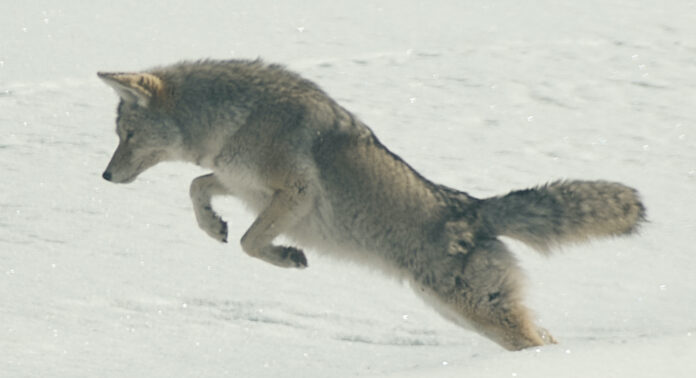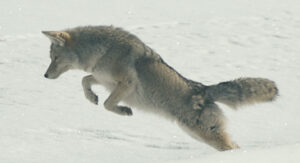
BY HARRY WEEKES

Recently, I was standing on the side of the Salmon hockey rink vaguely mesmerized by the Zamboni cleaning the ice. As much as I appreciated the clean sheet, I was equally impressed that 20 minutes later there was not a square inch on the ice surface that wasn’t covered in snow and the lines of skates. Thirty girls in 20 minutes of chasing 6 ounces of vulcanized rubber, and there was “no stone unturned.” Naturally, this got me thinking about that great subnivean world we simply call “under the snow.”
Depending on to whom you talk, we got four feet of snow at the end of January. And just like that, the great comforter of winter got a whole lot thicker. Looking out on the carpet of white, I tried to imagine how all of the little beasties—shrews, mice, voles, weasels, ground squirrels—were faring. The ground squirrels probably didn’t register the snow at all, as they’ve been hibernating for months. What was the snow like for the others in their subnivean tunnels?
In the movie version of my mind, Edgar the chubby vole squats on his ample haunches, nibbling a tasty rhizome of grass. His quiet world gets a bit more muffled. As the weight of the storm accumulates, there is a subtle “whumph,” and crystals of snow rain down the tunnel, slightly dusting my plump buddy.
Edgar shakes once or twice, preens his sleek coat, then moves another inch to scour the ground, looking for any stem, grass shoot, or seed he can find. And so it is with this entire world, hidden, but constantly active, all searching every nook and cranny for the food they need. Depending on which side of the equation the animal is on, this is either looking for plants or looking for the thing looking for plants.
The plants long ago found success in strategies of abundance mixed with both subtle and blunt forms of survival—thousands of seeds, hundreds of shoots, chemical cocktails of tannins and terpenes, often covered in thick and scaly bark and other forms of plant skin. Everything else hunts. Back and forth, searching for seeds or a scent, literally covering every available inch.
We people walk through this freshly frosted landscape and marvel at its tranquility, about the quiet after the storm, about how peaceful everything seems. Below our thundering hooves is a dynamic world of action, one that has been in constant motion, now, as it has been all winter, confined to trails and a webwork that no matter how complex is still less space than the open ground of spring, summer and fall.
Lucky humans make sport of winter. We bundle up in parkas, we cover ourselves in padded clothes, we strap skis and skates to our feet, and we chase powder and pucks in and around the mountains and the rinks.
And probably closer to us than we know, a whole suite of animals moves around with similar activity and purpose. Cloaked in parkas of fur they have grown, and layers of fat they have carefully cultivated, they twitch, snuffle, shuffle, and scamper. The major difference, of course, is consequence.
In Salmon, one of the games went into overtime, so-called “sudden-death.” Needless to say, this has an entirely different meaning three feet under the snow.
Harry Weekes is the founder and head of school at The Sage School in Hailey. This is his 49th year in the Wood River Valley, where he lives with Hilary and two of their three baby adults—Penelope and Simon. The other member of the flock, Georgia, is currently fledging at Davidson College in North Carolina.


